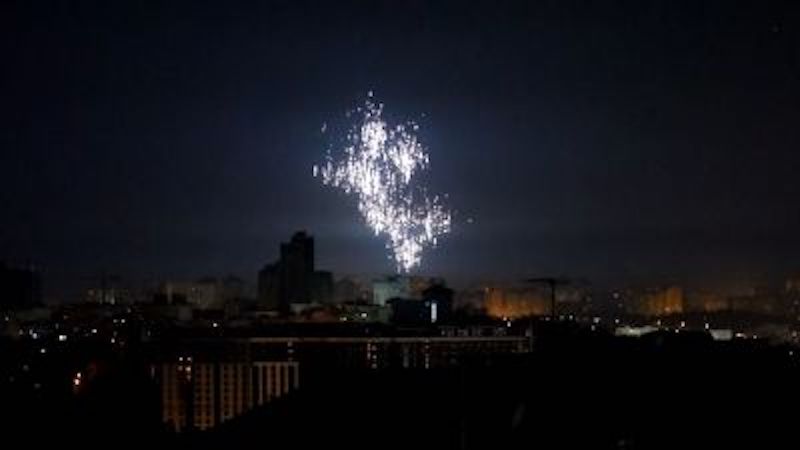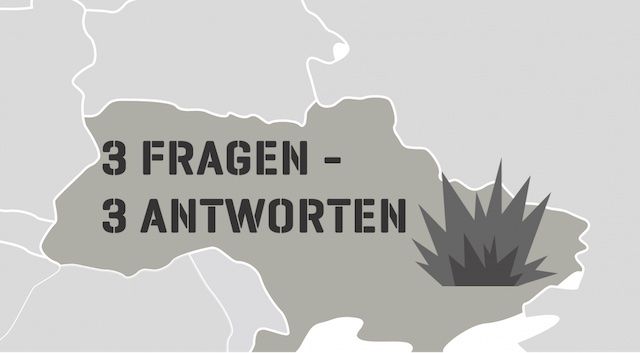Get the weekly SPARTANAT newsletter.
Your bonus: the free E-Book from SPARTANAT.

Oberst Jürgen Schlechter is the head of the Bundesheer's ABC Defense Center, which deals with atomic, biological, and chemical hazards. Here he answers current questions about the war in Ukraine.

The Bundesheer Expert Says:
What are Phosphorus Bombs and how do they work?
A phosphorus bomb contains a mixture of white phosphorus and rubber and is used as an incendiary bomb or as a smoke-generating agent. White phosphorus ignites itself in the air and then burns at about 1,300 degrees Celsius with the intense development of white smoke, which is harmful in larger quantities. Phosphorus is extinguishable with water, but reignites once it is dry.
Phosphorus causes fires even in small quantities and painful, slow-healing second and third-degree burns, penetrating deeply into tissue, down to the bones. In addition, its vapors are highly toxic. The phosphorus in incendiary bombs is usually mixed with a rubber gelatin so that the viscous mass adheres to non-burning surfaces. Those affected can also die from inhaling the toxic fumes, burns to the airways, or poisonings.

Are Phosphorus Bombs considered prohibited weapons?
While white phosphorus is an industrial chemical not subject to restriction, certain uses in weapons are prohibited or restricted by international humanitarian law. In particular, the use of such substances is prohibited when civilian individuals and/or civilian facilities could be affected as so-called "collateral damage."
Phosphorus bombs can also be considered chemical weapons due to their toxicity, so their use would also violate the Chemical Weapons Convention. Furthermore, "weapons, projectiles, and material, as well as methods of warfare" are prohibited if they are "capable of causing unnecessary suffering or unnecessary injury" or "are intended to cause or can be expected to cause extensive, long-term, and severe damage to the natural environment".
How can one protect themselves from Phosphorus weapons?
Protection against the effects of Phosphorus weapons is hardly possible and generally consists of avoiding contact and not inhaling the resulting fumes. Injuries must be immediately immersed in water and require urgent medical treatment.
BUNDESHEER on the Internet
UKRAINE: 3 Questions – 3 Answers
– UKRAINE: 3 QUESTIONS – 3 ANSWERS, PART 21: WAR AND LAW?
– UKRAINE: 3 QUESTIONS – 3 ANSWERS, PART 20: BIOLOGICAL WEAPONS?
– UKRAINE: 3 QUESTIONS – 3 ANSWERS, PART 19: ABC HAZARDS?
– UKRAINE: 3 QUESTIONS – 3 ANSWERS, PART 18: SUPPLY?
– UKRAINE: 3 QUESTIONS – 3 ANSWERS, PART 17: ROCKETS AND AIR DEFENSE?
– UKRAINE: 3 QUESTIONS – 3 ANSWERS, PART 16: AIR COMBAT?
– UKRAINE: 3 QUESTIONS – 3 ANSWERS, PART 15: COMBINED ARMS BATTLE?
– UKRAINE: 3 QUESTIONS – 3 ANSWERS, PART 14: TANK BATTLE?
– UKRAINE: 3 QUESTIONS – 3 ANSWERS, PART 13: UNDERGROUND FIGHT?
– UKRAINE: 3 QUESTIONS – 3 ANSWERS, PART 12: CYBERWAR?
– UKRAINE: 3 QUESTIONS – 3 ANSWERS, PART 11: NEUTRALITY?
– UKRAINE: 3 QUESTIONS – 3 ANSWERS, PART 10: HOW'S IT GOING?
– UKRAINE: 3 QUESTIONS – 3 ANSWERS, PART 9: ABC DANGER?
– UKRAINE: 3 QUESTIONS – 3 ANSWERS, PART 8: BATTLE FOR THE CITIES
– UKRAINE: 3 QUESTIONS – 3 ANSWERS, PART 7: AIR WAR AND DRONES
– UKRAINE: 3 QUESTIONS – 3 ANSWERS, PART 6: NUCLEAR POWER PLANTS AND NUCLEAR THREAT
– UKRAINE: 3 QUESTIONS – 3 ANSWERS, PART 5: WHAT WEAPONS?
– UKRAINE: 3 QUESTIONS – 3 ANSWERS, PART 4: WEAPONS FOR KYIV?
– UKRAINE: 3 QUESTIONS – 3 ANSWERS, PART 3: IS THERE RESISTANCE?
– UKRAINE: 3 QUESTIONS – 3 ANSWERS, PART 2: WHAT ARE THE CONSEQUENCES OF THE ATTACK?
SPARTANAT is the online magazine for Military News, Tactical Life, Gear & Reviews.
Send us your news: [email protected]
Ad
similar
Get the weekly SPARTANAT newsletter.
Your bonus: the free E-Book from SPARTANAT.


